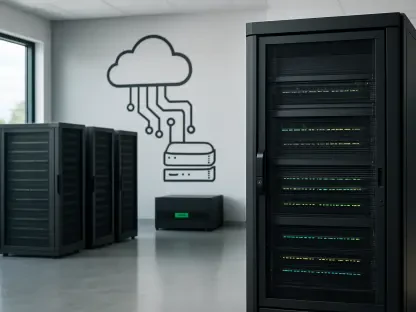Maryanne Baines is a renowned authority in cloud technology with extensive experience evaluating cloud providers and their tech stacks. Her insights on cloud data protection and security are highly sought after, making her the ideal expert to discuss the current trends in backup software and cybersecurity shifts. With the growing movement of data to the cloud, Maryanne sheds light on how companies like Rubrik are pivoting to address emerging challenges and opportunities.
How is Rubrik expanding its backup software capabilities, specifically concerning cloud databases and Oracle Cloud services?
Rubrik is making significant strides in broadening its backup software capabilities by targeting a wider range of cloud databases and Oracle Cloud services. They are gearing up to support managed relational databases like AWS RDS and Microsoft Azure SQL, with plans to incorporate MySQL, AWS Aurora, and Oracle down the line. This expansion also includes non-relational databases such as AWS DynamoDB and Azure Cosmos DB. For Oracle Cloud, new tools have been introduced to protect its databases and the Oracle Cloud VMware Solution, alongside orchestrated recovery support for Azure virtual machines.
In what ways is Rubrik shifting its focus towards cybersecurity, according to CEO Bipul Sinha?
Rubrik is increasingly focusing on cybersecurity, as highlighted by CEO Bipul Sinha, who emphasizes that recovery is now a key component of modern security strategies—not just a fallback option. He notes the growing likelihood that organisations may already have attackers lurking within their systems. Sinha stresses the importance of maintaining clean recovery points as one of the few effective defenses against potential threats, suggesting that leaders should operate under the assumption that breaches will eventually occur.
How does Krista Case from The Futurum Group describe the relationship between backup and security as more data moves to the cloud?
Krista Case from The Futurum Group underlines the intertwined nature of backup and security, especially as more data is migrated to the cloud. She highlights that it’s no longer merely about backing up data; it’s also about ensuring multiple copies to prevent data loss, validating those copies’ recoverability, and enabling swift recovery to support uninterrupted business operations. This integrated approach is crucial as the boundary between security and backup solutions continues to blur.
Why are relational databases often prime targets for attackers, according to Krista Case?
Relational databases are frequently targeted by attackers due to the sensitive information they house, such as medical records and financial data. Krista Case points out that these databases rely on standard query languages like SQL, which makes them susceptible to exploitation by attackers familiar with these systems. This familiarity with SQL and the value of the data stored makes relational databases high-value targets.
How do other vendors like Druva and Commvault compare to Rubrik in terms of cloud data protection efforts?
Druva and Commvault are also enhancing their cloud data protection offerings, keeping pace with Rubrik. Druva recently expanded its capabilities to include backup for Azure SQL and Azure Blob Storage. Similarly, Commvault announced plans to provide protection for virtual machines running on the Red Hat OpenShift Virtualization platform. Each of these companies is working toward robust solutions to safeguard data across various cloud environments.
What were some of the key cybersecurity strategies discussed during Rubrik’s virtual conference?
During Rubrik’s virtual conference, a range of cybersecurity strategies were explored, with a focus on getting the basics right. Experts like Ron Ross and Rob Joyce emphasized the importance of routine software patching, maintaining device inventories, and carefully managing access permissions. These foundational measures can thwart many threats. Joyce also highlighted the necessity for preparedness by default, noting that attackers are often embedded in systems long before causing disruption.
What insights did Ron Ross and Rob Joyce provide about dealing with attackers and preparing for potential intrusions?
Ron Ross and Rob Joyce shared critical insights on handling attackers and preparing for possible intrusions. They noted that attackers frequently infiltrate systems, using stolen credentials to blend in and expand their access quietly. Joyce stressed that attackers might understand a network better than those managing it, posing a daunting challenge. Ross advised companies to start preparedness initiatives with their most vital systems, ensuring a solid defense against potential breaches.
Why is it important for companies to have a plan even if outside support is lacking, according to Ron Ross and Rob Joyce?
Ross and Joyce emphasize that a solid internal plan is crucial even when external support is unavailable. Joyce’s advice to “sweat the details” underscores the importance of thorough preparation to reduce downtime, which he views as an existential threat. Effective planning helps organizations maintain operations and resilience, adjusting for unforeseen circumstances and without relying solely on external assistance.
Do you have any advice for our readers?
For organizations and individuals navigating the cloud and cybersecurity landscape, staying informed and adaptable is key. It’s crucial to continuously educate yourself, assess your security posture, and remain proactive. Embrace a mindset of preparedness, anticipate potential threats, and don’t underestimate the value of basic but robust security practices.









